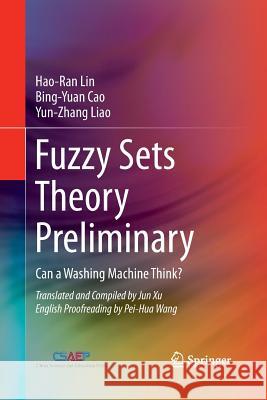Fuzzy Sets Theory Preliminary: Can a Washing Machine Think? » książka
topmenu
Fuzzy Sets Theory Preliminary: Can a Washing Machine Think?
ISBN-13: 9783319889870 / Angielski / Miękka / 2019 / 150 str.
Kategorie:
Kategorie BISAC:
Wydawca:
Springer
Język:
Angielski
ISBN-13:
9783319889870
Rok wydania:
2019
Wydanie:
Softcover Repri
Ilość stron:
150
Waga:
0.26 kg
Wymiary:
23.39 x 15.6 x 0.97
Oprawa:
Miękka
Wolumenów:
01
Dodatkowe informacje:
Wydanie ilustrowane











